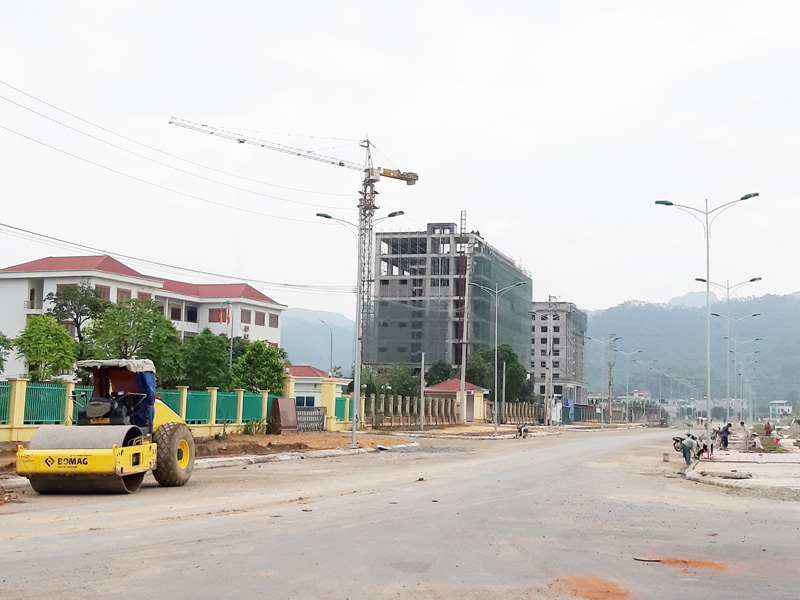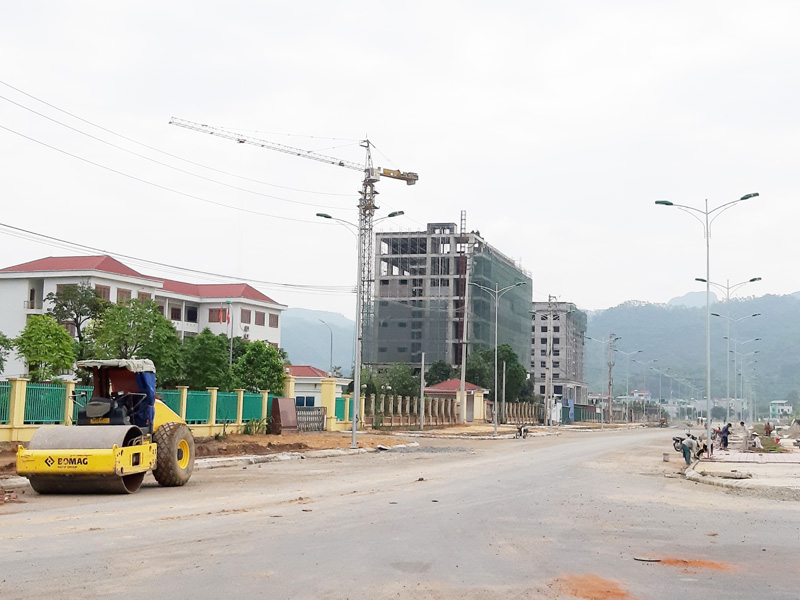
(HBO) - In 2018, Hoa Binh province ranked 48th out of the 63 cities and provinces nationwide in the ranking of the provincial competitiveness index, up four places compared to 2017. The land access index is one of the seven component indexes that contribute to higher ranking. Although there are improvements, firms still meet difficulties in land access.
The provincial People’s Committee is directing departments,
agencies and localities to step up administrative reform, help remove obstacles
faced by enterprises and investors in site clearance, access to land, and
improve business climate and the provincial competitiveness.
 The provincial People’s Committee is directing
departments, agencies and localities to step up administrative reform, create
favourable conditions for individuals and organisations to access land to carry
out urban infrastructure projects. Photo is taken at Quynh Lam central planning
area (Hoa Binh city).
The provincial People’s Committee is directing
departments, agencies and localities to step up administrative reform, create
favourable conditions for individuals and organisations to access land to carry
out urban infrastructure projects. Photo is taken at Quynh Lam central planning
area (Hoa Binh city).
The provincial People’s Committee is urging agencies and
localities to seriously realise Decision No.02/QD-UBNDA dated January 2, 2019, promulgating
a plan to continue key measures to improve business climate and provincial
competitiveness for 2019 with orientations to 2021, review the weak component indexes
to devise specific measures.
The provincial People’s Committee also asked the Department
of Natural Resources and Environment to adopt measures to improve the land
access index and reform administrative procedures, cutting time for land use
licensing.
At the same time, it requested serious dealing with projects
without planning and land-use plans, substantially improving business
environment, enhancing open and thematic dialogues with firms to thoroughly
address their difficulties, maintain hotlines to promptly update and deal with
legitimate suggestions by companies and the public, resolutely discipline
officials and cadres who show a poor sense of responsibility and cause
difficulties in processing procedures involving firms and the public./.
According to data from the Hoa Binh Provincial Party Committee, the industrial production index for the first six months of 2025 is estimated to have increased by 20% compared to the same period last year. This marks the highest year-on-year growth rate for this period since 2020.
In the first six months of 2025, Hoa Binh province’s export turnover was estimated at 1.145 billion USD, marking an 18.11% increase compared to the same period in 2024. Import turnover was estimated at $ 804 million, a 17.15% increase, which helped the province maintain a positive trade balance.
The lives of the ethnic minority farmers in Tan Lac district have gradually improved thanks to the new directions in agricultural production. This is a testament to the collective strength fostered through the professional associations and groups implemented by various levels of the district’s Farmers’ Union.
With the motto the "product quality comes first,” after nearly one year of establishment and operation, Muong village’s Clean Food Agricultural and Commercial Cooperative, located in Cau Hamlet, Hung Son Commune (Kim Boi district), has launched reputable, high-quality agricultural products to the market that are well-received by consumers. The products such as Muong village’s pork sausage, salt-cured chicken, and salt-cured pork hocks have gradually carved out a place in the market and they are on the path to obtaining the OCOP certification.
In the past, the phrase "bumper harvest, rock-bottom prices" was a familiar refrain for Vietnamese farmers engaged in fragmented, small-scale agriculture. But today, a new spirit is emerging across rural areas of Hoa Binh province - one of collaboration, organisation, and collective economic models that provide a stable foundation for production.
Maintaining growing area codes and packing facility codes in accordance with regulations is a mandatory requirement for agricultural products to be eligible for export. Recently, the Department of Agriculture and Environment of Hoa Binh province has intensified technical supervision of designated farming areas and packing facilities to safeguard the "green passport" that enables its products to access international markets.



 The provincial People’s Committee is directing
departments, agencies and localities to step up administrative reform, create
favourable conditions for individuals and organisations to access land to carry
out urban infrastructure projects. Photo is taken at Quynh Lam central planning
area (Hoa Binh city).
The provincial People’s Committee is directing
departments, agencies and localities to step up administrative reform, create
favourable conditions for individuals and organisations to access land to carry
out urban infrastructure projects. Photo is taken at Quynh Lam central planning
area (Hoa Binh city).